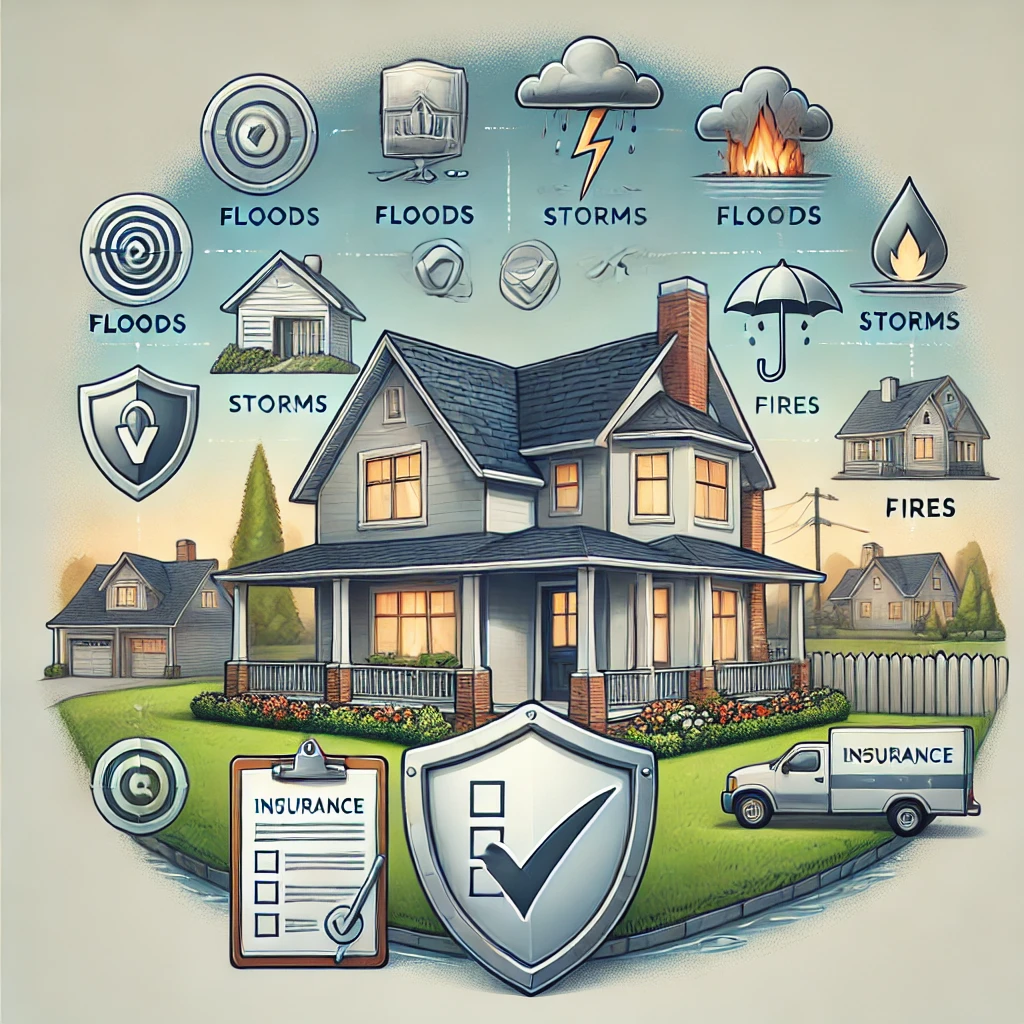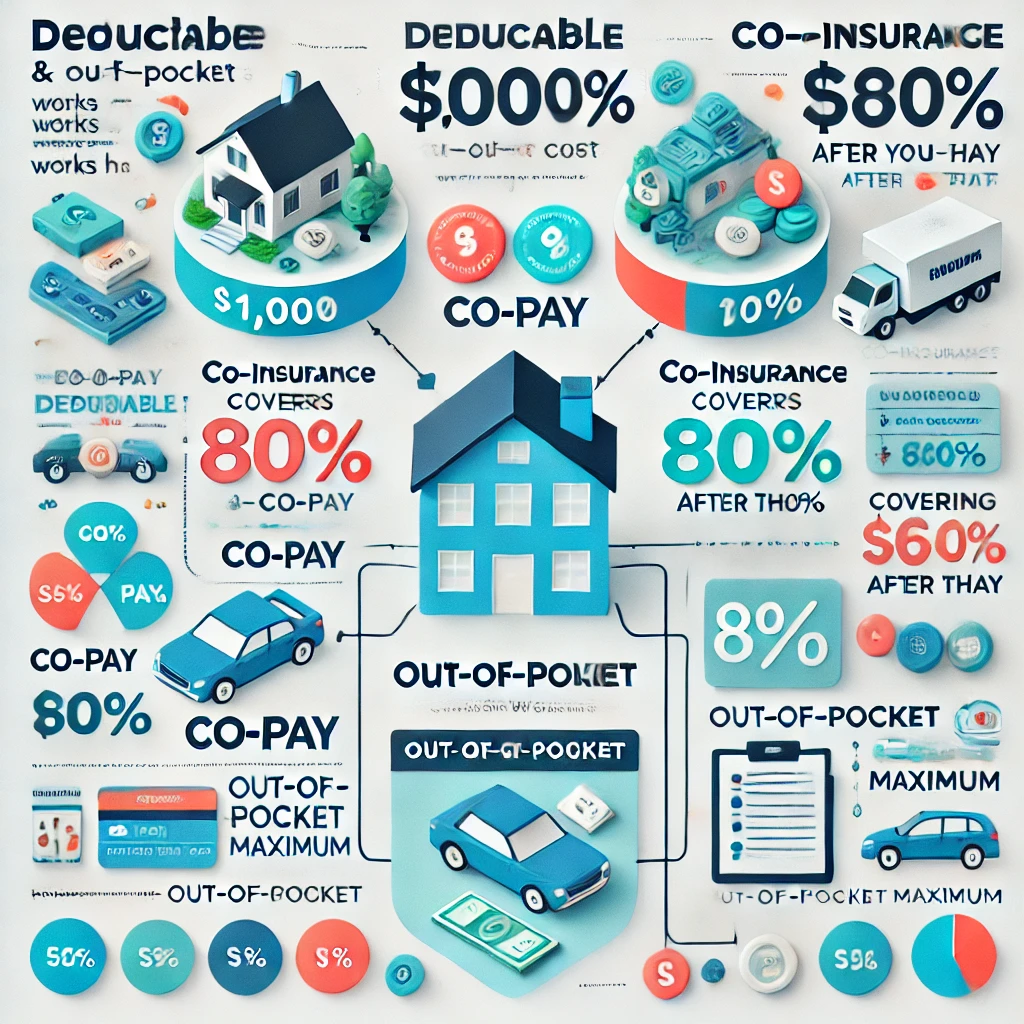Homeowners insurance is an essential safety net, offering financial protection for your property in the event of unexpected damage or loss. But with the vast number of insurance providers and policy options, choosing the right one can seem like a daunting task. Understanding what to look for and tailoring the policy to your unique needs can make the process easier and ensure that you’re adequately covered. In this article, we’ll guide you through the key considerations and help you select the best homeowners insurance for your property.
Introduction to Homeowners Insurance
What Is Homeowners Insurance?
Homeowners insurance is a type of property insurance that provides financial protection against damages to your home and personal belongings. It also offers liability coverage in case someone is injured on your property. Most policies cover a wide range of incidents, including fire, theft, and certain natural disasters. However, coverage specifics can vary significantly, making it crucial to thoroughly evaluate the policy options available to you.
The Importance of Homeowners Insurance for Property Owners
Owning a home is likely the biggest investment you’ll ever make, so protecting it with the right insurance is vital. Homeowners insurance doesn’t just safeguard your physical structure—it also covers personal possessions and provides liability protection. This means that if an unfortunate event, such as a fire or a storm, damages your home, insurance can help pay for repairs or rebuilding. Additionally, it protects you from legal claims if someone gets hurt on your property. Given the unpredictable nature of accidents, having homeowners insurance gives you peace of mind and financial security.
Key Factors to Consider When Choosing Homeowners Insurance
Understanding Coverage Types
The first step in choosing the best homeowners insurance for your property is understanding the different types of coverage available. Most policies include dwelling coverage, which protects the home itself, and personal property coverage, which insures your belongings. There’s also liability protection for legal expenses in the event someone is injured on your property. You may also need to consider additional coverage for specific situations, such as natural disasters, which standard policies might exclude.
Assessing Coverage Limits
It’s important to assess the coverage limits of any insurance policy you’re considering. The coverage limit is the maximum amount the insurance company will pay out for a covered loss. Make sure that the limits are high enough to cover the cost of rebuilding your home or replacing your belongings in a worst-case scenario. A helpful rule of thumb is to calculate your home’s replacement cost, which may differ from its market value, and ensure your policy covers at least that amount.
Reviewing Deductibles
A deductible is the amount you are responsible for paying out of pocket before your insurance kicks in. Policies with higher deductibles often have lower premiums, but you’ll want to balance that with how much you’re willing to pay in case of a claim. For instance, a high deductible can lower your monthly payments, but if a disaster strikes, you might have to pay a large sum before receiving any financial aid from your insurance provider.
Additional Coverage Options
Not all homes require the same level of coverage. Additional coverage options such as flood insurance, earthquake coverage, or extended replacement cost coverage can be critical depending on where your property is located. Many standard policies don’t include these, so it’s crucial to evaluate whether your home might be at risk for any specific hazards not covered by a basic plan.
The Role of Location in Homeowners Insurance
How Geography Impacts Insurance Rates
Where your property is located plays a significant role in determining your homeowners insurance premium. For example, homes in areas prone to natural disasters like hurricanes, earthquakes, or wildfires tend to have higher insurance rates because the risk of damage is greater. On the flip side, properties in low-risk regions may qualify for more affordable premiums.
Natural Disasters and Coverage
Certain areas may require specific disaster coverage. For example, homes in flood zones might need separate flood insurance, as standard policies usually don’t cover flood damage. If your property is in an area known for seismic activity, earthquake insurance could be another consideration. These types of coverage are vital in high-risk areas and can prevent financial devastation in the event of a catastrophe.
Regional Insurance Considerations
Local building codes, weather patterns, and even crime rates in your area can all affect your homeowners insurance premiums. In some states, there are specific requirements for minimum coverage levels due to local risks, while in others, you may have the flexibility to choose more comprehensive protection at a reasonable rate. Understanding how your location affects your insurance needs will help you make more informed decisions.
Evaluating Insurance Providers
Researching Insurance Companies
Choosing the best homeowners insurance also involves selecting the right provider. Look for companies with strong reputations for customer service, claims processing, and financial stability. A company’s financial health is important because it affects their ability to pay out claims. You can research companies through third-party rating agencies like AM Best or Standard & Poor’s, which offer insight into an insurer’s financial strength.
Comparing Rates and Customer Service
It’s a good idea to get quotes from several insurance providers to compare rates. However, don’t focus solely on price. Customer service is just as important—especially when you need to file a claim. Look for reviews and testimonials from other customers to get a sense of how the company handles claims and overall customer satisfaction.
Reading Reviews and Customer Feedback
Reading reviews from current policyholders can give you a better understanding of how an insurance company handles claims, processes payments, and communicates with its customers. Websites like Consumer Reports and J.D. Power offer ratings and reviews that can help you make a more informed decision.
Financial Stability of Providers
Another factor to consider is the financial stability of the insurer. This can be particularly important if you live in an area prone to natural disasters, where insurers may face a high volume of claims. Checking financial ratings from agencies like A.M. Best will ensure that your provider has the means to pay out claims, even in the case of widespread damage or disasters.
Understanding Insurance Policy Terms
Key Insurance Terminology Explained
Homeowners insurance policies can be complex, and understanding the key terms will help you navigate the options more effectively. Common terms include:
- Premium: The amount you pay for the insurance policy, usually annually or monthly.
- Deductible: The amount you pay out-of-pocket before the insurance covers the rest.
- Exclusion: Specific events or circumstances not covered by your insurance policy.
- Rider: An additional provision added to the standard policy for extra protection.
By knowing these terms, you can better evaluate and compare different policies.
You can also read; How to File an Insurance Claim Quickly and Effectively
Common Exclusions and Limitations
Every homeowners insurance policy comes with exclusions, which are situations where the insurance won’t provide coverage. Common exclusions include natural disasters like floods or earthquakes, wear and tear, or damage caused by negligence. Understanding these exclusions is important so that you can consider additional insurance if needed, or know what to expect in terms of out-of-pocket expenses.




